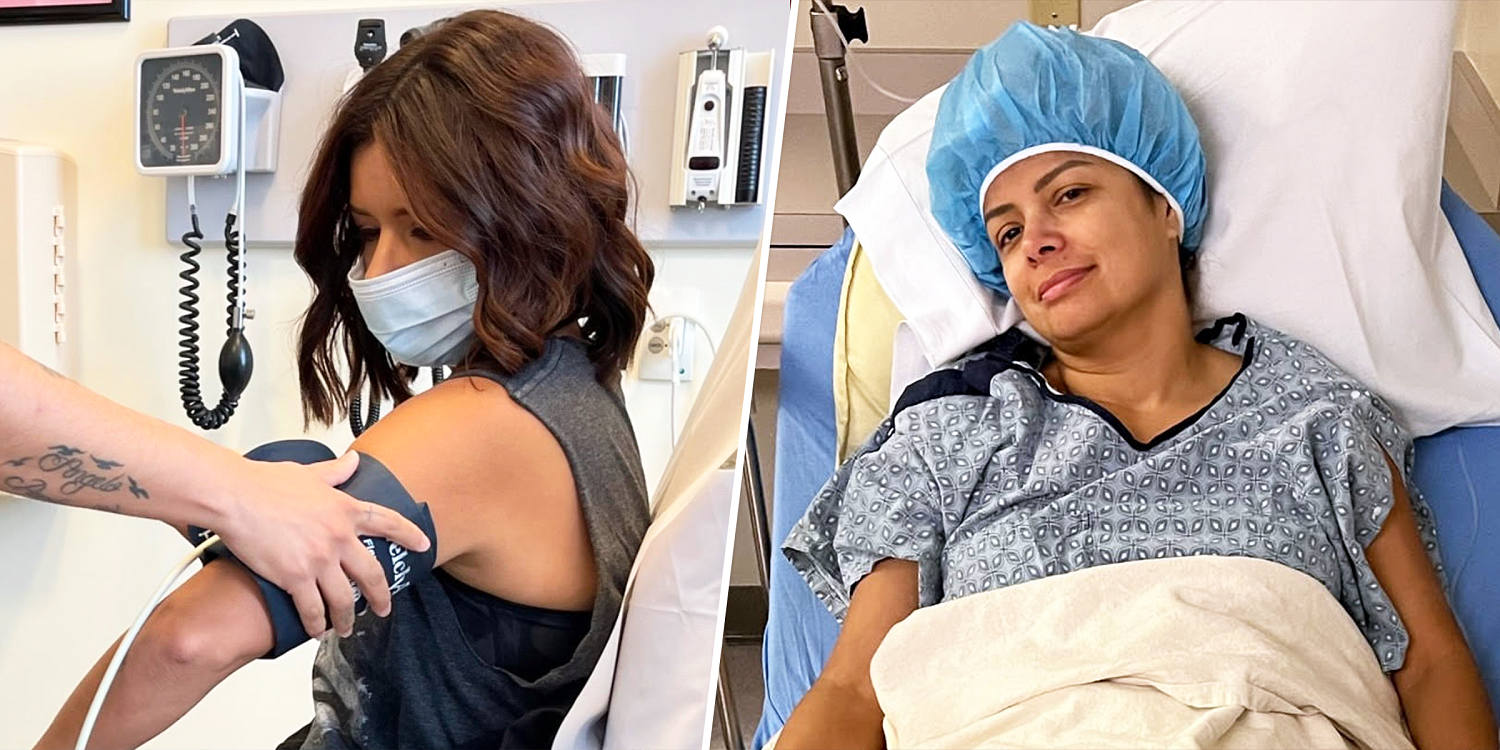
New Zealand women with Ehlers-Danlos Syndrome are increasingly heading to Germany for what they say is life-changing surgery. Recent medical reviews say there is not robust evidence for the surgery, and outcomes for patients have been mixed. Despite the evidence gaps, patients still feel compelled to go overseas because of lack of treatment options in New Zealand.
Treatment for a rare condition in Germany is coming under more scrutiny as the number of New Zealanders crowdfunding to get surgery overseas keeps rising. At least 20 New Zealanders who have been diagnosed with Ehlers-Danlos Syndrome (EDS) or associated vascular compression syndromes have travelled to Germany at their own cost to be diagnosed and operated on by two German doctors. Many of the patients say the surgery changed their life and they felt it was their only option because of what they saw as a lack of dedicated treatment in New Zealand.

Two recent reviews in New Zealand paint a more complicated picture. They say the diagnoses are unusual and that the procedures are not backed by robust evidence. The outcomes of the surgeries are mixed or unclear, the reviews found.
“We are concerned,” a spokesman for the Vascular Society of Aotearoa New Zealand told the Herald when asked about New Zealanders heading to Germany for treatment. “Even rare or highly specialised surgical treatments [for other illnesses] are offered at multiple centres around the world and there is data from multiple publications. This is not the case here.
” Most of the patients who have travelled to Germany have been diagnosed with Ehlers-Danlos Syndrome (EDS), which is characterised by stretchy skin, bendy joints, and fragile tissue. Some of the patients have Abdominal Vascular Compression Syndrome (AVCS). This is when blood vessels are under intense pressure, restricting blood flow, and symptoms can include dizziness and chronic pain.
Much of the debate and confusion on this issue centres on whether these two syndromes are linked, and to what extent. EDS is a rare, inherited condition, affecting around one in 5000 people – though some experts believe that is an underestimate. The vast majority of patients, around 90%, have the hypermobile form of the condition (hEDS).
While most EDS patients have a good prognosis and their condition can be managed, a very small subset develop severe and even deadly symptoms. It is a complex disorder affecting connective tissue which weaves throughout the body and supports nerves, muscles, bones, and cardiovascular systems – meaning there is a huge range of potential symptoms and no single treatment. Some New Zealand patients, usually young women, have been told their condition is purely or mostly psychological .
Taylor Doyle, from Ashburton, struggled with stomach problems for most of her life and was hospitalised in 2021 after complaining of severe pain, nausea and problems with eating and drinking. Her mother, Zalie, said doctors at Christchurch Hospital carried out scans and tests but were unable to find a physical cause for her symptoms. They “very quickly” leaned towards a psychological basis for her condition, she said.
Zalie began researching her daughter’s condition online and discovered two doctors who said they specialised in vascular compression disorders: paediatrician Dr Thomas Scholbach, based in Leipzig, and vascular surgeon Dr Wilhelm Sandmann, who works out of a private clinic in Dusseldorf. In 2022, the Doyles travelled to Germany where Scholbach diagnosed Taylor with multiple vascular compressions and said it was likely she had EDS. A week later, Sandmann carried out a 7.
5-hour procedure. It involved an incision from sternum to pelvis, the insertion of two grafts, pinning a kidney to a rib cage, and the cutting of a ligament to allow the intestines to drop slightly. “It was pretty major,” said Zalie.
Taylor, now 16 years old, was not completely cured, her mother said. But relative to her pre-surgery life, she was thriving. “I’ve always said, and I maintain it, that she’s not 100%.
But she is 100% better than she was, without a doubt.” “She went from spending the majority of her life if not in hospital at home in bed, miserable, crying, upset, unable to eat or drink, malnutrition, you name it. It was a horrible existence.
“She’s at school, she has had a part-time job over the summer, she is going to university. She is living. Not without limitations at times, but certainty nothing stopping her in her tracks like it was.
” Last year, the acting chief medical officer at Auckland Hospital, Dr Carl Eagleton, asked for a review of the literature on the diagnosis and treatment of vascular compression surgeries. The review came after a number of funding applications from patients to travel overseas for surgery. The review was led by the Northern Region Clinical Practice Committee, a hospital-based unit which investigates new technologies.
The committee focused on the diagnosis and treatment of a condition called median arcuate ligament syndrome (Mals), in which tissue presses tightly on a major artery and the nerves. In a letter accompanying the evidence brief, committee chairman Dr James Le Fevre said the available evidence for the diagnosis and treatment of Mals was low quality and there were no randomised control trials. The consensus of the committee was that the surgical procedure could “not be reasonably described as a well-established treatment with proven efficacy in clinical trials or proven efficacy in regular practice”.
Le Fevre said that while vascular compression syndromes could be a “plausible explanation” for the symptoms which come with EDS, those symptoms “could actually be functional” (without an obvious physical cause). That meant there was a risk that the surgery could provide no relief of the symptoms other than a placebo effect. There might be a connection between syndromes like EDS and vascular compression syndromes, the evidence brief said, and it might be possible for patients to have multiple, co-existing vascular compression syndromes.
However, the only data on this link – aside from a few case reports – came from a single study led by Sandmann, which the committee said had a number of limitations. Le Fevre acknowledged that Sandmann’s findings could be a “highly meaningful medical discovery” but said this required further evidence and rigorous testing. “Thus, at the current time, undertaking multiple simultaneous vascular release surgeries in one patient should be considered to be on the spectrum of innovative and experimental surgery.
” The review by the clinical practice committee, completed in January, has been cited when patients have had funding applications to travel to Germany rejected. Patients seeking treatment unavailable in New Zealand can apply to the Ministry of Health’s High Cost Treatment Pool for support, but there is no record of an EDS patient making a successful application. Families have instead had to crowdfund their trips through the website Givealittle, usually seeking between $100,000 and $200,000.
A group representing vascular surgeons in New Zealand also noticed the number of patients heading to Germany for surgery. After fielding inquiries from patients, the Vascular Society of New Zealand put the issue on its agenda at its annual general meeting in February. Out of the discussion came a position statement, which echoes some of the clinical practice committee’s conclusions.
The statement, in the name of chairman and vascular surgeon JK Wicks, said EDS should only be diagnosed by people with specific expertise in the condition. Diagnosis required a multidisciplinary approach including general medicine, gastroenterology, radiology and vascular surgery. A psychological assessment was also an important part of this process, and physiotherapists, dieticians and nurse specialists might also play a role.
“The [society] acknowledges that there is evidence that patients being worked up for this diagnosis can suffer harm if they are not managed by engaged clinicians with access to the multidisciplinary expertise required.” The Vascular Society said surgery for compression syndrome in EDS patients was not well established in medical literature, and therefore there was little evidence to support safe and clear guidelines for the operation. It could only endorse surgeons carrying out the operation if it was part of a multi-disciplined team, the outcomes were highly audited, the follow-up of the patients was “fastidious”, and the patient’s data was provided to a national database.
In a separate statement, the society’s spokesman told the Herald the number of patients travelling overseas for these procedures was not known and anecdotal data showed mixed results. The society was concerned that New Zealand patients were returning to New Zealand after major surgery without management plans or co-ordination. An organisation representing gastroenterologists expressed hesitation about commenting publicly, saying it was a sensitive issue.
“Our reticence to interview at the moment reflects the complexity these individuals face in their healthcare journey,” said New Zealand Society of Gastroenterology president Professor Andrew Day. In a statement, Day said his organisation was aware of a number of people with hEDS and longstanding symptoms having “experimental” surgery overseas, in Germany but also in Spain. Members had reported looking after patients on their return because often the gastrointestinal symptoms persisted after surgery.
Patients with hEDS could have a range of gastrointestinal symptoms – while some had none, others had difficult syndromes which included nausea and disorders of gut-brain interaction. “These are genuine conditions that can be hard to live with,” Day said. The mechanisms of these issues were not fully understood or definable, but there was a growing body of evidence which supported a multi-disciplinary approach to treatment.
“It would be fair to say that these models of joined-up integrated care are not yet available in Aotearoa New Zealand.” The German newspaper Der Spiegel published an investigation on the two doctors in 2019. The newspaper claimed at the time that there was growing evidence that Scholbach’s diagnoses were not always made correctly, and alleged some of Sandmann’s operations had left patients sicker than before.
The article alleged Scholbach had routinely reported multiple compression syndromes in a single patient, even though medical literature said one syndrome was rare and two even rarer. The article cited experts who said they believed the two men overdiagnosed and overtreated compression syndromes. The newspaper said Sandmann considered himself a pioneer in his field and the latest in a line of innovative doctors whose work was initially misunderstood before being widely adopted.
He told Der Spiegel that he did not know of any patients who were sicker after their surgery. The Der Spiegel article also detailed how patients came from around the world to be treated by the two doctors. That had caused alarm in some countries.
It quoted a leading vascular surgeon in the United Kingdom, who had seen 10 of the German doctors’ patients, had attempted to prevent further British patients from seeking treatment in Germany because of concerns about safety. The newspaper reported that Sandmann, who is 81 years old, was being investigated by the public prosecutor’s office on negligent bodily harm charges. The Herald contacted Sandmann by email.
He said the court case had been running for seven years and was still not resolved. The surgeon did not respond directly to questions about his practices but suggested that few people had a firm understanding of hEDS or compression syndromes. Sandmann said his “only advice” was to follow his academic work, and directed the Herald to his 2021 paper published in the American Journal of Medical Genetics – the study which was reviewed by the Northern Regional Clinical Practice Committee and the Vascular Society.
He highlighted his long, distinguished career. He was a member of the University of Dusseldorf’s medical faculty for 39 years, 25 of them as chairman and director of the vascular surgery department. “So, create something positive with your story,” he said.
The Herald has sought comment from Scholbach. Sandmann said if medical societies in New Zealand were uncertain about his work they should send a vascular surgeon to observe him and receive training. He said that two New Zealand doctors had already done so.
One of them is Dr Chris Holdaway , a vascular surgeon based in Hamilton. He was part of a small group of New Zealand specialists who have shown an interest in EDS and supported patients in travelling to Germany. In Holdaway’s view, the German doctors were trailblazers and the surgery was well-established rather than experimental: “It’s not rocket science”.
He was critical of the Northern Clinical Practice Committee’s review, saying in his opinion it looked only narrowly at one type of operation, for Mals. One of the main problems for people with vascular compression syndromes, he said, was another condition called nutcracker syndrome, in which patients have weakness in their left renal vein. Sandmann addressed this by inserting a ringed graft around the vein, relieving pressure on it.
This technique was not considered by the committee, Holdaway said. Responding to claims that Sandmann’s patients were not always better off after treatment, he said the outcomes of the operation were not immediately obvious and the recovery time could take months. Because patients had complex conditions with multiple symptoms, the surgery only addressed one of their problems.
But nearly all of them reported a significant improvement in their pain levels. They were also able to eat and drink again, and some could return to school or university. “These kids will never be normal,” Holdaway said.
“People say the surgery doesn’t cure it – it doesn’t, but it cures the vascular compression part of it and makes a life a lot better.” Holdaway surveyed the first 11 New Zealand patients who went to Germany and received a response from seven of them. This group of patients spent a combined 560 days in hospital in the year before their surgery.
After surgery, they had spent a combined six days in hospital, he said. The surgeon wants to perform the procedure in New Zealand but has been defeated in his attempts to get support within the private and public health systems. Health Minister Shane Reti has told him he has set up a committee to consider the issue but Holdaway said he was not optimistic about any changes occurring.
Most New Zealand patients who travelled to Germany said they had been unable to get the level of care they required in this country. Health NZ – Te Whatu Ora has said it is reviewing how EDS is diagnosed and treated in New Zealand , saying the “current evidence is low quality”. This work, being led by the interim chief medical officer Dr Nick Baker, would lead to consistent, national advice on evidence-based diagnosis and treatment.
Health NZ said in a statement that EDS was an extremely rare group of conditions and that no single treatment, including surgery, was consistently successful in removing the underlying problem. “As with any evolving medical condition, particularly where the available evidence for treatment is poor or of low quality, any diagnosis of EDS must be carefully considered,” Health NZ said in a statement provided to the Herald in August. The review would cover abdominal vascular compression syndrome (AVCS), which Health NZ said could be a complication of EDS or a consequence of weight loss.
“A very careful assessment of how we diagnose and treat [it] in New Zealand is required because the current evidence is of low quality, with no published randomised controlled trials. “The studies that are available are poor due to inconsistent reporting of participants’ characteristics and the use of multiple diagnostic processes. Additionally, outcome reporting is relatively short-term in most studies, and reported outcomes were highly variable.
” The rates of symptoms improving and recurring were also highly variable across studies, with some reporting high recurrence rates, Health NZ said. The apparent risks and evidence gaps for the surgery have not deterred New Zealand patients from heading overseas, at great financial cost. Advocacy groups and social media pages have been set up to guide families through the process.
The German doctors appeal to international patients, with dedicated sections on their websites for overseas people and resources in several languages. Zalie Doyle helps to run a Facebook page to educate families in a similar position to hers. She said the doctors didn’t promise a miracle for her daughter and were blunt about the potential downsides of the surgery.
“We were told that it would be high-risk,” she said. “We were told that she was going to have to be careful for the rest of her life and that recovery is long and very up and down. “But we had no other option.
” Isaac Davison is an Auckland-based reporter who covers health issues. He joined the Herald in 2008 and has previously covered the environment, politics and social issues. Share this article Reminder, this is a Premium article and requires a subscription to read.
Copy Link Email Facebook Twitter/X LinkedIn Reddit.














